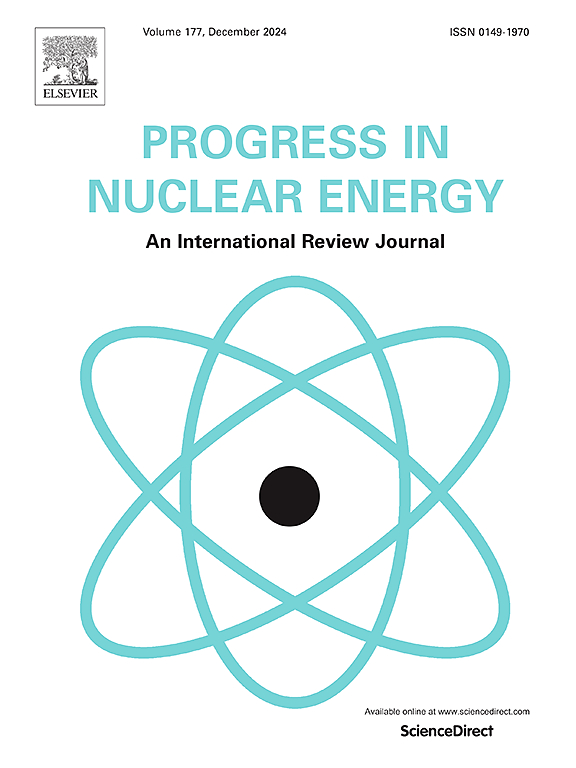Experimental study on startup performance of sodium heat pipe with high ratio of length-to-diameter under different coolant flow rates
IF 3.3
3区 工程技术
Q1 NUCLEAR SCIENCE & TECHNOLOGY
引用次数: 0
Abstract
Sodium heat pipes, characterized by a high length-to-diameter ratio, are commonly employed in various heat pipe-cooled nuclear reactors. In these reactors, sodium serves as the working medium, remaining solid at room temperature. The startup process of such heat pipes is complex, involving phenomena such as the melting of the solid sodium and the establishment of a continuous vapor flow. The effectiveness of these heat pipes relies heavily on their startup behavior from a frozen state. To assess the startup performance of sodium heat pipes, an experimental study was conducted on a 2.5-m-long arterial sodium heat pipe, using high-temperature compressed air as the coolant. The investigation examined the impact of different air flow rates on startup performance. The findings revealed that high-temperature compressed air significantly improved the startup performance of the 2.5-m arterial sodium heat pipe under all three airflow conditions. Notably, during the startup process, the heat absorbed in the evaporation section is relatively minimal, making it beneficial to reduce the cooling capacity of the coolant to improve the heat pipe's startup performance. Additionally, when the air flow rate is lowered, the heat pipe requires less startup power and achieves a quicker startup time. By analyzing the data, it is revealed that the evaporator exit temperature increases with the reduction of air flow rate, which can avoid the sonic limit.
求助全文
约1分钟内获得全文
求助全文
来源期刊

Progress in Nuclear Energy
工程技术-核科学技术
CiteScore
5.30
自引率
14.80%
发文量
331
审稿时长
3.5 months
期刊介绍:
Progress in Nuclear Energy is an international review journal covering all aspects of nuclear science and engineering. In keeping with the maturity of nuclear power, articles on safety, siting and environmental problems are encouraged, as are those associated with economics and fuel management. However, basic physics and engineering will remain an important aspect of the editorial policy. Articles published are either of a review nature or present new material in more depth. They are aimed at researchers and technically-oriented managers working in the nuclear energy field.
Please note the following:
1) PNE seeks high quality research papers which are medium to long in length. Short research papers should be submitted to the journal Annals in Nuclear Energy.
2) PNE reserves the right to reject papers which are based solely on routine application of computer codes used to produce reactor designs or explain existing reactor phenomena. Such papers, although worthy, are best left as laboratory reports whereas Progress in Nuclear Energy seeks papers of originality, which are archival in nature, in the fields of mathematical and experimental nuclear technology, including fission, fusion (blanket physics, radiation damage), safety, materials aspects, economics, etc.
3) Review papers, which may occasionally be invited, are particularly sought by the journal in these fields.
 求助内容:
求助内容: 应助结果提醒方式:
应助结果提醒方式:


